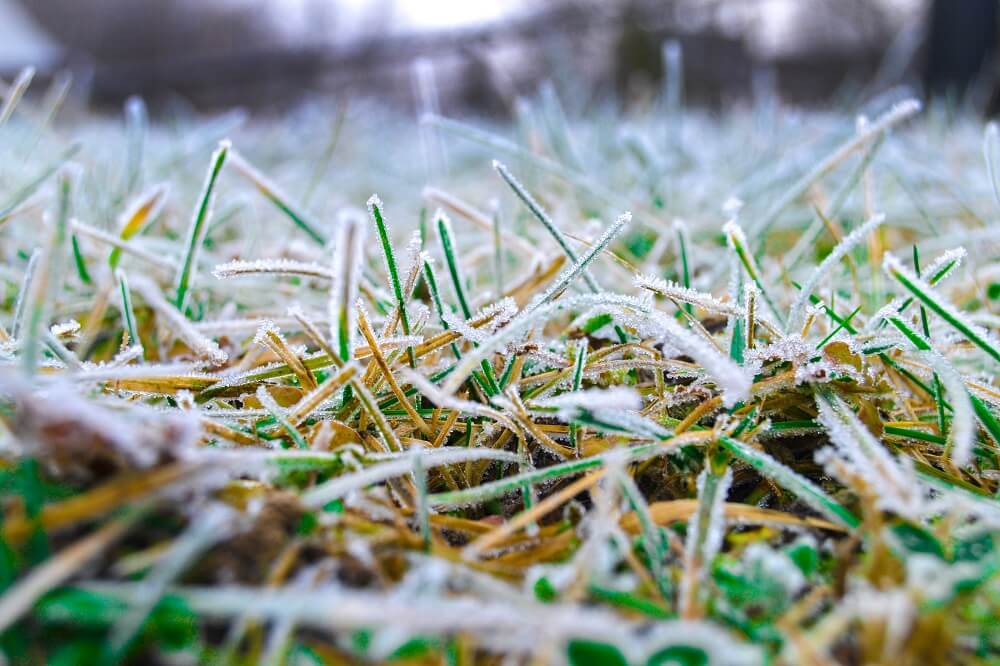
Each season requires us to look after the garden differently. With the arrival of cooler weather, it’s time to think about, how to prepare a lawn for winter. Grass, like other plants in your garden, needs special care to survive the cold months and to flourish successfully in spring. It should not be forgotten that the lawn is exposed to a number of factors in winter that can weaken or even destroy it. Therefore, proper preparation becomes key to maintaining its health and beauty. In this post, we will suggest what to look out for and how to take care of your green turf step by step before the onset of winter.
Preparing the lawn for winter is a process that is worth thinking about as early as late summer. Taking proper care of your lawn during this period ensures that it will be able to withstand the low temperatures and other harsh conditions that winter brings.
Before the first frosts arrive, gardening experts recommend cutting the grass with a slightly lower setting than usual. Why is this important? When the grass is too long, it can accumulate moisture under the layer of snow, which promotes rotting. Rotten parts of the lawn provide an ideal environment for various pathogens to grow, which can lead to grass diseases. Cutting the lawn to a lower height allows it to survive the winter months better. In addition, shorter grass is less likely to be crushed by snow. If it is crushed under the weight of the snow for an extended period of time, it can turn yellow or even die in certain areas.
Autumn is the time when nature prepares for its winter dormancy, and you have the opportunity to take steps to ensure your piece of greenery gets off to a healthy start in the coming year. In particular preparing the lawn for winter is extremely important, and one of the key elements in this process is its appropriate fertilisation.
Why is autumn fertilisation such an important activity? The answer lies in the specific needs of the plants during this period. Special crop support measures for autumn are formulated differently from those used at other times of the year. They contain less nitrogen, the ingredient mainly responsible for the rapid growth and green colour of the lawn. Instead, they focus on providing more potassium and phosphorus. These two ingredients are crucial for strengthening the roots of the grass, which is essential for the grass to successfully survive the harsh winter conditions.
Scarifying and aerating focus on cutting the surface of the lawn, but in a slightly different way. Scarifying involves removing a layer of felt (dead grass, plant debris) from the surface of the lawn, which in turn helps to improve the penetration of water and nutrients into the soil. Aeration, on the other hand, involves creating small holes in the soil, which improves air and water permeability to the roots of the lawn.
Autumn is the ideal time to tackle stubborn perennial weeds. During this period, many weeds build up nutrients in their roots in preparation for winter. Getting rid of weeds in autumn prevents them from spreading the following year, which is key to maintaining the aesthetics and health of your lawn.
Edging Lawn sods not only have an aesthetic function, but also protect your lawn from damage. Before winter, make sure they are well fixed and do not allow leaves and other debris to get under the lawn. In addition to maintaining your edging, take care to clean your lawn. Make sure that all leaves, branches etc. have been removed from it. Leaving them over the winter can lead to lawn rot and disease development.
When you think about it, how to prepare a lawn before winter, it’s worth remembering that your actions are not only aimed at getting your lawn through this time of year, but also at ensuring that it is healthy and ready to flourish in the spring. Taking regular care of your lawn in autumn is an investment that pays dividends throughout the following year.